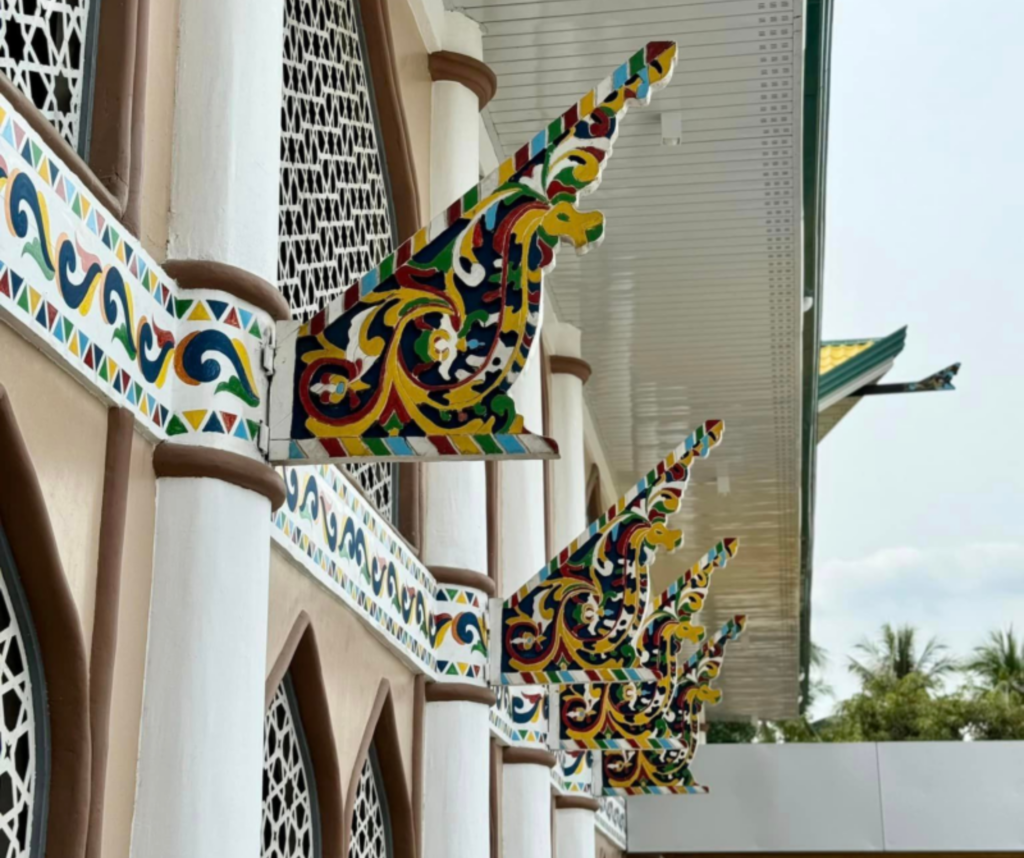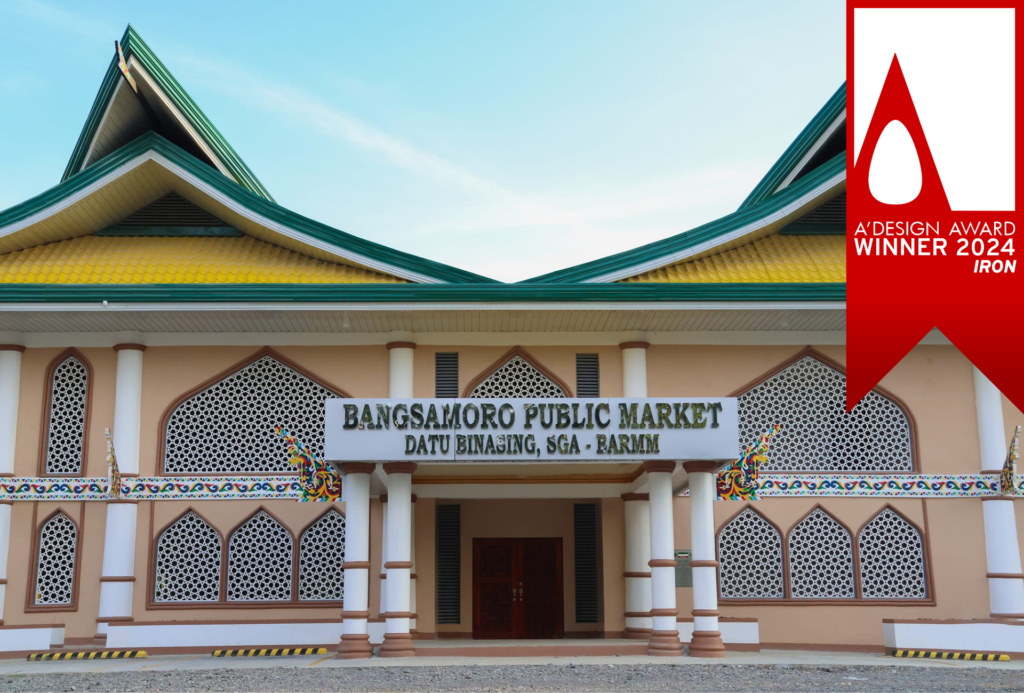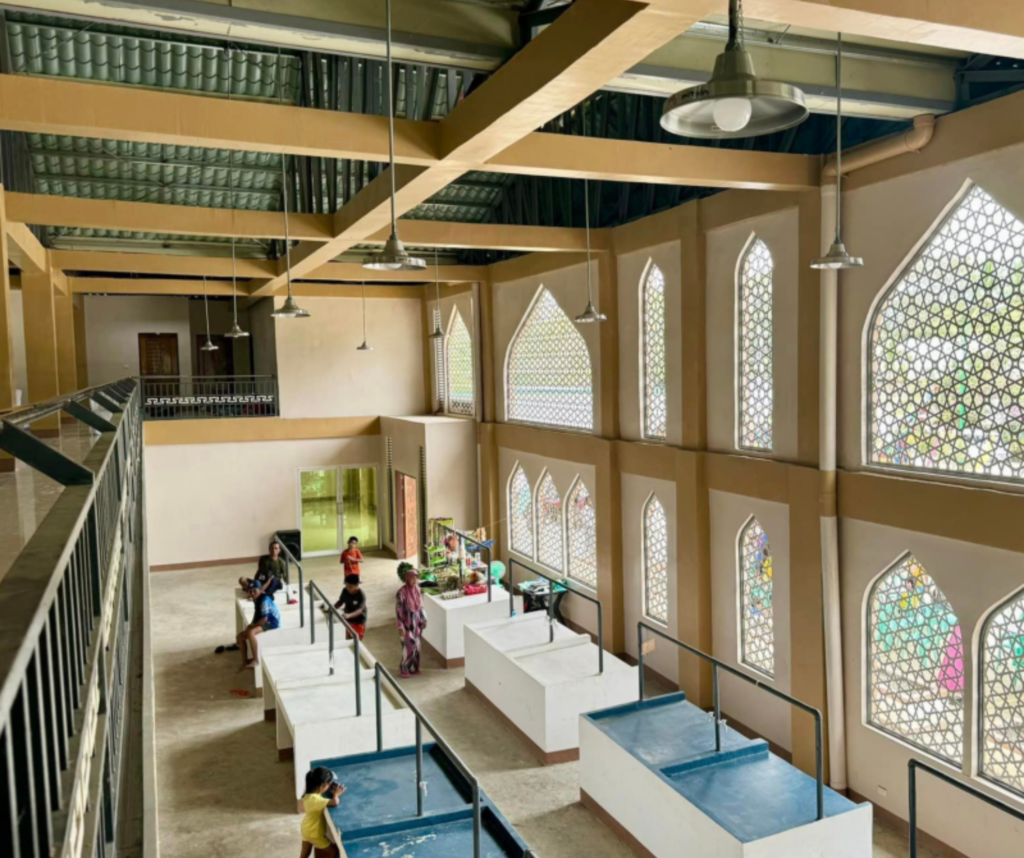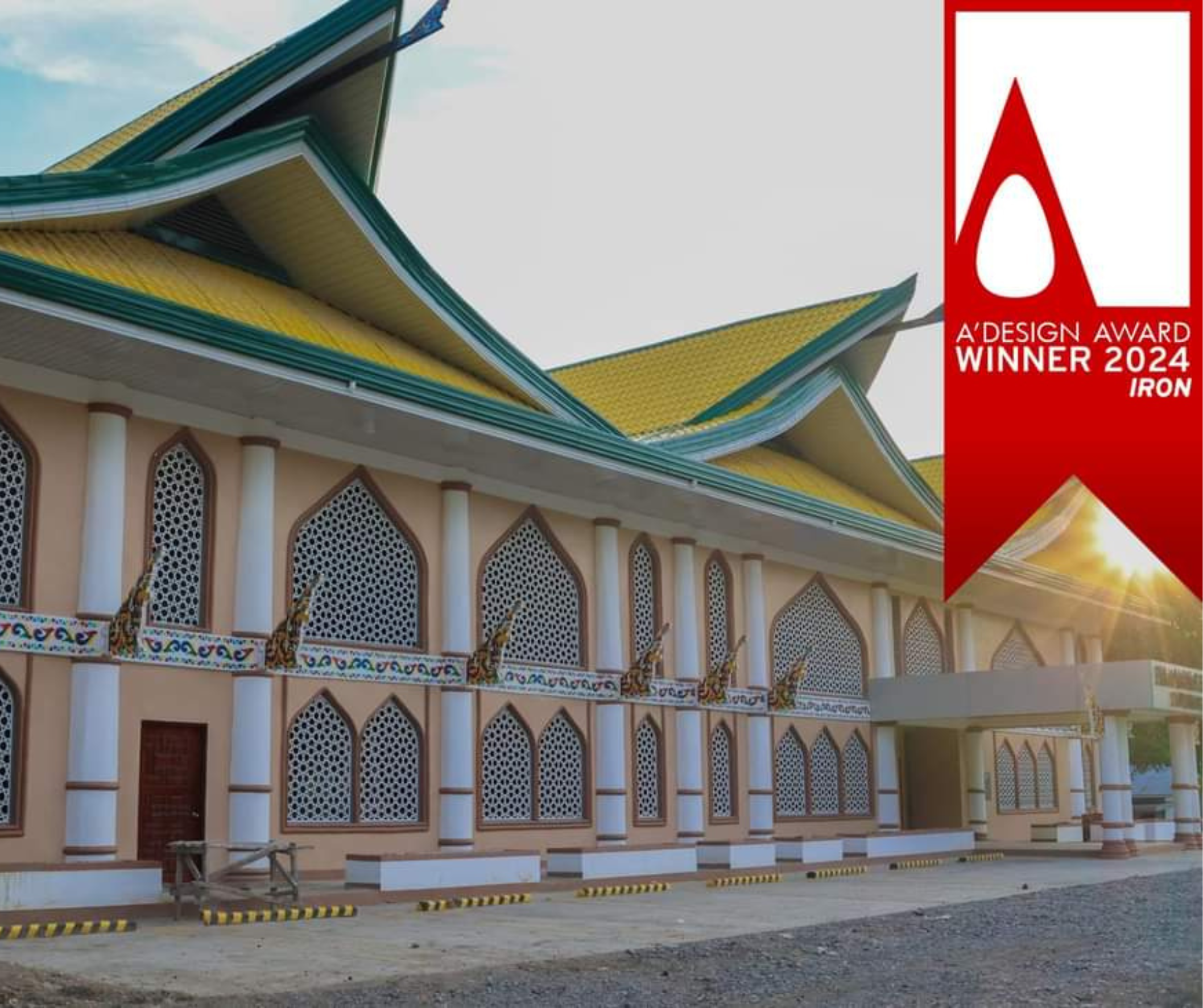The design of the BARMM Public Markets is deeply informed by the natural and cultural landscape of the region. One of the most striking features of the design is the roof, which takes inspiration from the surrounding mountain ranges that are iconic to BARMM. The flowing, organic silhouette of the roof mirrors the undulating contours of the mountains, establishing a visual connection between the public market and the natural environment that has shaped the region’s identity for generations. This design choice not only enhances the market’s aesthetic appeal but also fosters a sense of place, grounding the market in the region’s unique geography.
Commissioned by the BARMM Ministry of the Interior and Local Government (MILG), Naguib Sinarimbo, this public market is led by architect Gloryrose Dy Metilla, with the assistance of junior designers Jenelle Metilla and Don Dion Cawaling. The design seeks to embody the heart and soul of the Bangsamoro people, creating a public market that serves as both a hub of commerce and a cultural landmark.
Incorporating sustainability into the design is another key consideration. The architects have integrated skylights into the roof structure, allowing natural light to pour into the interior of the market. These skylights create an inviting and vibrant atmosphere, reducing the reliance on artificial lighting and lowering the overall energy consumption. The design encourages the interplay of light and shadow, creating a dynamic environment that evolves throughout the day. This focus on natural light not only enhances the aesthetic experience of the market but also supports the project’s sustainable goals by reducing the carbon footprint.

Cultural Representation: Vibrant Colors and Community Spaces
In addition to its natural inspiration, the design of the BARMM Public Markets also celebrates the rich cultural heritage of the region. The architects chose a vibrant color palette inspired by traditional Bangsamoro textiles, crafts, and art forms. Bright reds, yellows, greens, and blues evoke the spirit of the region’s lively festivals and colorful traditions. These hues are not just decorative; they serve as a powerful visual representation of the region’s dynamic industries and the thriving cultural landscape of the Bangsamoro people.
The design also emphasizes the importance of community interaction. The market is conceived as a place for social engagement, where locals can come together for cultural exchanges, performances, and gatherings. Large open spaces are integrated into the design, allowing for festivals, traditional ceremonies, and community events to take place within the market itself. By creating flexible spaces for both commerce and community activities, the market becomes more than just a place for transactions—it is a venue that strengthens the identity and cohesion of the BARMM community.
Sustainability and Functionality: Meeting Local Needs
Beyond cultural considerations, the project places a strong emphasis on sustainability and functionality. Public markets play a crucial role in the daily lives of local residents, serving as central hubs for commerce, food distribution, and social interaction. To ensure the market meets these needs, the design incorporates durable, locally sourced materials that can withstand the region’s tropical climate, ensuring the market’s longevity.
The architecture also incorporates efficient ventilation systems to maintain a cool and comfortable environment for both vendors and shoppers despite the region’s hot and humid climate. The open-air design, combined with the mountain-inspired roof, allows for natural airflow, reducing the need for mechanical cooling systems. This approach not only lowers energy consumption but also promotes a more comfortable and sustainable environment.

Community and Economic Impact: Boosting Local Business
The development of the BARMM Public Markets has the potential to drive significant economic growth in the region. Public markets have always been vital to local economies, providing a space for small-scale farmers, artisans, and entrepreneurs to sell their products. By creating a modern, well-designed market space, the project aims to empower local businesses by offering them a more efficient and attractive environment to operate. The design will help vendors increase the visibility of their products, streamline their operations, and improve their marketability.
The market will also serve as a cultural and economic focal point for visitors from outside the region. By promoting the rich traditions, crafts, and products of the Bangsamoro people, the market will raise awareness of the region’s unique identity. It is expected to attract tourists and foster intercultural exchanges, providing a platform for the Bangsamoro culture to be showcased to the broader world. This will not only boost tourism but also enhance the region’s presence on the national and global stage.

The BARMM Public Markets project is an ambitious and visionary undertaking that blends the cultural, environmental, and economic needs of the region. With its focus on sustainable architecture, vibrant cultural expression, and community empowerment, the project promises to become a landmark that serves both the practical and symbolic needs of the Bangsamoro people. As the design progresses, it is poised to stand as a testament to the innovative spirit of the region and its commitment to preserving its cultural heritage while embracing modernity. Ultimately, the BARMM Public Markets will be a shining example of how thoughtful architecture can foster social cohesion, promote economic vitality, and celebrate cultural identity.

